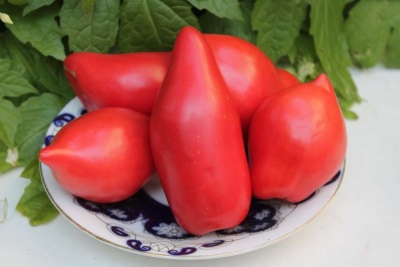
- Authors: Russia, Siberian selection
- Category: grade
- Growth type: determinant
- Appointment: fresh consumption, for pickling and canning, for juice, for ketchup and tomato paste
- Ripening period: early
- Ripening time, days: 100-105
- Growing conditions: for open ground, for closed ground
- Marketability: high
- Bush size: undersized
- Bush height, cm: up to 60
The Wolf Fang tomato has a number of important benefits. It can be safely grown even in rather harsh places. But all the advantages of the plant are revealed only with a competent approach.
Breeding history
Wolf Fang was bred in Russia. This is one of the crops of Siberian selection. The variety is not included in the state register. The specific developers are unknown. The main seller of planting material is the Siberian Garden company.
Description of the variety
Wolf canine is a determinant variety. It is recommended for both open and closed land. The height of the bushes will be no more than 0.6 m. The intensity of branching and the number of leaves are moderately high. The stem is missing.
The main qualities of the fruit
This tomato is red when ripe. The mass of berries ranges from 120 to 170 g. They have a transitional shape from the heart to the pepper. The rind is very dense. A glossy tint is typical for her.
Taste characteristics
The flesh of Wolf Fang is juicy and dense. Excellent meatiness is typical for her. The sugar concentration is quite high.
Ripening and fruiting
Wolf canine is an early ripening variety. The fruits will ripen 100-105 days after the first shoots appear. Harvesting takes place in July and August. Only occasionally do weather conditions make adjustments to this schedule.
Yield
The plant has a fairly high fertility. It can reach 12 kg per 1 m2. Therefore, the variety is no less effective than the vast majority of other tomato crops.
The timing of planting seedlings and planting in the ground
The seeds can be sown in containers in March or April. Accordingly, the planting of ready-made seedlings in free ground or a greenhouse is carried out in May or April. Specific dates are determined by the climatic regime of the area and the weather in a particular year.

Growing tomato seedlings is an extremely important process, because it largely depends on whether the gardener can harvest at all. All aspects must be taken into account, from seedbed preparation to planting in the ground.
Landing scheme
You need to plant 3 tomato bushes per 1 m2. A denser landing is fraught with serious problems. The culture begins to hurt and degrade, tomatoes sometimes interfere with each other.

Growing and caring
The plant must be formed. The formation of bushes is allowed in both 2 and 3 stems. Formation is as simple as possible. Watering is very important for Wolf Fang. Feeding with complex mineral mixtures is very important.
Other cultivation measures do not differ from those of other determinate tomatoes. Timeliness of formation plays an important role. A prerequisite for success is pinning.Landing in a permanent place at an air temperature of less than +15 degrees is undesirable. The weeds will have to be removed, the earth will have to be loosened, and the bush is watered strictly at the root.
Mulching after watering is also essential. It allows you to retain more moisture and use less water. As soon as the inflorescences appear, the culture should be immediately fed with mineral compounds with potassium and phosphorus. Re-application of such fertilizers should occur after another 14-20 days.
Nitrogen mixtures cannot be added during flowering. During the fruiting period, they are also unacceptable to use. If possible, you should choose an area where there is no danger from strong winds. Moisture during watering should not get on the sheet plates, otherwise sunburn is possible. It is quite within the power of any summer resident to comply with these recommendations.




A plant needs different micronutrients at each stage of growth. All fertilizers can be divided into two groups: mineral and organic. Folk remedies are often used: iodine, yeast, bird droppings, eggshells.
It is important to observe the rate and period of feeding. This also applies to folk remedies and organic fertilizers.
Disease and pest resistance
To protect against late blight and alternaria, profile protective treatments are required. Specific pests for this plant have not been described. The protective measures will be the same as in other cases.


Resistant to adverse weather conditions
The wolf's fang withstands the cold. That is why it is advised for cultivation in the northern regions of Russia. Heat resistance not reported. However, it is unlikely that it is fundamentally higher than that of most varieties common for Russia.

























































































